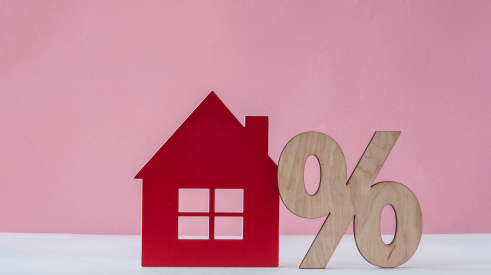In its just-released 1999 report, "Who’s Buying Homes in America" Chicago Title Corp. offers profiles of first-time and repeat buyers and the impact—past, present and future—of each on the housing market. In this third installment, we’ll look at the regional variations evident in this national survey.
Northeast Region
In 1999, Boston led the national trend toward two-income families, with the highest share among all buyers, 88.9%, and first-time buyers, 96.6%. These percentages compare with the national average of 80.5% and 84%, respectively.
Contrary to the national findings, New York City experienced a large increase in first-time buyer market share, to 56.9% versus the national average of 44.7%. Like Boston, the percentage of married buyers declined and single buyers increased, also contrary to the national trends.
Compared with most other markets, Philadelphia had smaller percentage changes in most key categories in 1999. The city does not appear in any of the categories on Chicago Title’s survey’s high/low chart. This consistency was due in part to the fact that household income in-creased at a faster pace than the median home price - without a significant decline in the amount of a down payment.
Large increase in married buyers—to 68.6% from 57.7%—and a decline in single buyers, to 20.2% from 24.1%, in Washington, D.C. resulted in an increase in average family size to 2.8 from 2.4.
Midwest Region
In Chicago, regarded as the birthplace of contemporary urban condominium dwellings, a large decline in the metropolitan area’s share among first-time buyers (to 43.1% from 47.7%) caused a minor retreat from condominiums (to 19.0% from 19.8%) to single family homes (to 78.2% from 76.8%).
For all buyers, Cleveland featured a lot of lows:
- the lowest percentage of new homes bought at 10.5%
- the lowest average monthly payment at $882, and
- the lowest average monthly payment as a percentage of after-tax income, 29%.
In Detroit, despite a 4.4% decrease in household income, repeat buyers in the city put down the largest down payment as a percentage of the home sale price, 31.0%.
South Region
In housing’s hottest markets, the face of buyers is changing. The age of the first-time buyer in Atlanta continued to increase, from 28.7 years in 1997 to 30.3 in 1998 and 33.2 in 1999. The number of new homes purchased declined to 36.8% from 38.9% of all home sales, making it second in the survey behind Phoenix. Bucking the national trend, Dallas/Fort Worth witnessed a huge shift to first-time buyers-to 50.0% from 38.7%-and a decrease in two-income families to 80.3% from 85.0%. However, increases in married buyers in 1999, and specifically large increases in married first-time buyers (79.5% and 64.5%) reflect national trends.
The situation was significantly different in Houston where much higher increases in average home prices (13.6%) than median home prices (4.0%) indicated a large number of home sales at the highest end of the spectrum. Of the homes sold in the city in 1999, 7.1% carried a price tag of more than $300,000. The senior set made its presence felt in Florida. In 1999, retirees represented 7.1% of all home buyers in Orlando, contributing to the lowest repeat buyer household income ($65,100) among those cities surveyed. Orlando also featured the lowest average home price for all buyers, $123,700; $103,300 for first-time buyers and $139,100 for repeat buyers. T $127,300, the city also registered the lowest median home price for repeat buyers.
West Region
An economy unto itself, California’s housing market continues at a record rate. After breaking the $200,000 mark for median home price in 1998, Los Angeles followed up strong with a 7.5% increase in 1999, reaching a median home price of $223,000. With a decline in married buyers and an increase in singles, the city countered national trends.
New home sales as a percent of total home sales were much higher in Orange County than in other major California markets. This was due, in part, to exceptionally low unemployment in the region. Booming Orange Country also has the distinction of being the area that features the highest average time to save for a down payment - 3.7 years.
Further north, San Francisco continued to lead the survey in several categories:
- highest median and average home prices;
- highest average monthly payment;
- highest average monthly payment as a percentage of after-tax income;
- highest number of single buyers
- and highest household income.
The city’s low unemployment rate (2.2%-the lowest in the survey) and the booming technology sector are reasons for the region’s high household income and high home prices. Surrounding submarkets such as Oakland and San Jose, also have exceptionally low unemployment rates at 3.1% and 2.9% respectively. Moving inland, among all the cities surveyed, Phoenix featured the highest percentage of new home sales at 42.9% and the lowest monthly payment for first-time buyers at $788. Phoenix is the number two market in the survey behind Atlanta in total new home sales at 39,000 versus Atlanta’s 48,500.
While first-time buyers with two incomes increased substantially in Denver in 1999, to 93.8% from 75.0%, the large increase in median home price (11.7%) and a decline in average home price (2.8), indicated a shift toward the center of the pricing spectrum.
|
Characteristics |
Boston |
New York City |
Philadelphia |
Washington, D.C. |
||||
|
1999 |
1998 |
1999 |
1998 |
1999 |
1998 |
1999 |
1998 |
|
|
Buying for fist time |
50% |
50% |
56.9% |
52.1% |
48.9% |
47.9% |
47.8% |
52.2% |
|
Repeat Buyer |
50% |
50% |
43.1% |
47.9% |
51.1% |
52.1% |
52.2% |
47.8% |
|
Average Number of homes looked at |
12.0 |
11.6 |
11.0 |
12.9 |
10.6 |
12.0 |
14.1 |
15.3 |
|
Bought New Home |
14.8% |
18.0% |
14.3% |
17.8% |
18.9% |
20.6% |
25.6% |
23.3% |
|
Bought Used Home |
85.2% |
82.0% |
85.7% |
82.2% |
81.1% |
79.4% |
74.4% |
76.7% |
|
Bought Singe-Family |
72.6% |
73.2% |
81.9% |
83.4% |
90.9% |
91.5% |
84.4% |
83.3% |
|
Bought Multi-Family |
8.8% |
6.8% |
8.1% |
6.1% |
1.0% |
1.1% |
3.0% |
3.3% |
|
Bought Condo |
18.5% |
19.8% |
8.5% |
8.8% |
8.1% |
7.3% |
12.0% |
12.6% |
|
Characteristics |
Chicago |
Cleveland |
Detroit |
Minneapolis |
||||
|
1999 |
1998 |
1999 |
1998 |
1999 |
1998 |
1999 |
1998 |
|
|
Buying for fist time |
43.1% |
47.7% |
40.0% |
37.1% |
46.3% |
42.7% |
47.1% |
50.7% |
|
Repeat Buyer |
56.9% |
52.3% |
60.0% |
62.9% |
53.7% |
57.3% |
52.9% |
49.3% |
|
Average Number of homes looked at |
14.0 |
13.6 |
12.0 |
11.5 |
11.7 |
11.8 |
11.4 |
15.3 |
|
Bought New Home |
23.4% |
76.6% |
10.5% |
89.5% |
20.0% |
80.0% |
21.1% |
78.9% |
|
Bought Used Home |
20.1% |
79.9% |
12.1% |
87.9% |
17.1% |
82.9% |
24.1% |
75.9% |
|
Bought Singe-Family |
78.2% |
76.8% |
84.3% |
88.6% |
85.0% |
86.6% |
87.2% |
84.5% |
|
Bought Multi-Family |
2.7% |
3.3% |
0.3% |
0.9% |
1.3% |
1.0% |
3.3% |
2.2% |
|
Bought Condo |
19.0% |
19.8% |
15.4% |
10.5% |
13.7% |
12.4% |
9.5% |
13.4% |
|
Characteristics |
Atlanta |
Dallas/Ft. Worth |
Houston |
Orlando |
||||
|
1999 |
1998 |
1999 |
1998 |
1999 |
1998 |
1999 |
1998 |
|
|
Buying for fist time |
43.3% |
41.1% |
50.0% |
38.7% |
36.3% |
40.7% |
42.7% |
48.6% |
|
Repeat Buyer |
56.7% |
58.9% |
50.0% |
61.3% |
63.7% |
59.3% |
57.3% |
51.4% |
|
Average Number of homes looked at |
15.7 |
13.0 |
14.8 |
13.2 |
13.2 |
15.0 |
11.2 |
11.0 |
|
Bought New Home |
36.8% |
38.9% |
33.9% |
33.8% |
31.8% |
27.2% |
29.7% |
30.8% |
|
Bought Used Home |
63.2% |
61.1% |
66.1% |
66.2% |
68.2% |
72.8% |
70.3% |
69.2% |
|
Bought Singe-Family |
93.3% |
91.1% |
93.8% |
92.4% |
92.5% |
95.0% |
80.0% |
82.0% |
|
Bought Multi-Family |
1.4% |
1.1% |
1.3% |
1.3% |
1.3% |
0.3% |
1.4% |
1.8% |
|
Bought Condo |
5.3% |
7.8% |
4.9% |
6.3% |
6.2% |
4.7% |
18.6% |
16.2% |
|
Characteristics |
Los Angeles |
Orange County |
San Francisco |
Phoenix |
||||
|
1999 |
1998 |
1999 |
1998 |
1999 |
1998 |
1999 |
1998 |
|
|
Buying for fist time |
43.6% |
48.5% |
43.3% |
35.5% |
48.9% |
52.2% |
47.1% |
50.7% |
|
Repeat Buyer |
56.4% |
51.5% |
56.7% |
64.5% |
51.1% |
47.8% |
52.9% |
49.3% |
|
Average Number of homes looked at |
15.0 |
16.0 |
15.7 |
13.5 |
14.9 |
14.8 |
11.4 |
15.3 |
|
Bought New Home |
10.9% |
10.7% |
21.8% |
21.0% |
11.7% |
8.9% |
21.1% |
24.1% |
|
Bought Used Home |
89.1% |
89.3% |
78.2% |
79.0% |
88.3% |
91.1% |
78.9% |
75.9% |
|
Bought Singe-Family |
82.2% |
84.4% |
72.8% |
77.4% |
85.0% |
86.6% |
43.0% |
43.4% |
|
Bought Multi-Family |
1.4% |
1.9% |
1.7% |
1.0% |
1.3% |
1.0% |
11.1% |
8.9% |
|
Bought Condo |
16.4% |
13.7% |
25.5% |
21.6% |
13.7% |
12.4% |
45.9% |
47.7% |
|
Characteristics |
Denver |
|
|
|
|
|
1999 |
1998 |
||||
|
Buying for fist time |
36.6% |
38.6% |
|
|
|
|
Repeat Buyer |
63.4% |
61.4% |
|||
|
Average Number of homes looked at |
10.0 |
13.9 |
|
|
|
|
Bought New Home |
35.7% |
28.4% |
|
|
|
|
Bought Used Home |
64.4% |
71.6% |
|||
|
Bought Singe-Family |
84.3% |
84.2% |
|
|
|
|
Bought Multi-Family |
1.9% |
1.4% |
|||
|
Bought Condo |
13.8% |
14.4% |
|||
Heather McCune is the Editor-in-Chief for Professional Builder and Luxury Home Builder. Please email her with any comments or questions regarding her column.
Advertisement
Related Stories
Economics
Shelter Costs Drive Inflation Higher Than Expected in January
January Consumer Price Index data show inflation increased more than anticipated as shelter costs continue to rise despite Federal Reserve policy tightening
Economics
Weighing the Effects of the Fed's and Treasury's Latest Announcements
The upshot of the Jan. 31 announcements is that while mortgage rates will stay higher for longer, they're likely to hold steady
Economics
NAHB CEO Tobin Says 'Housing Renaissance' on the Horizon
Responding to positive housing-related data such as falling mortgage rates and increased homebuyer activity, NAHB's CEO Jim Tobin is optimistic






